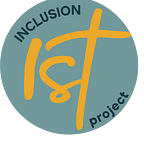Where is the line between compassion and enablement when it comes to addressing racism within one’s social circle?
This question is really layered. But the line between compassion and enablement is this idea that the people that we’re talking to, we want to take care of their feelings, we don’t want to offend them. We don’t want to damage the relationship. But at the same time, we also don’t want to enable bad behavior. So, where is the line?
This question is another example of calling out people versus calling in people. It’s our responsibility to be an interrupter, especially in our social circle, because racism, racist systems, and racist ideas are all around us, all of the time. If we’re not willing to disrupt them, then nothing will change.
Disrupting racist ideas does not have to be violent, aggressive, mean, or hurtful. We have the responsibility now and this is the line between compassion and enablement. Because, as a person of color, I’m like, you know what? We’ve been compassionate, it’s time for us to stop enabling this bad behavior.
But, we have to get used to being uncomfortable. We have to go and speak up. It’s not our intent to hurt feelings, but calling attention to bad behavior is our intention and sometimes emotions get stirred up in the process.
If someone is hurt by calling attention to bad behavior, hopefully, you’re able to repair those relationships. These conversations can get heated and some people have families where addressing racism within one social circle and the things that people are saying is very, very racist. How do you have a conversation with a racist person? And that’s kind of hidden in this question.
It’s important to come from a place of wanting to listen and to understand because if you go at them, you’re really not going to get anywhere. This is your opportunity to understand what they mean, to ask more questions, to become a detective and to put your ego and the triggers to the side and become an observer, a researcher, because as you understand where they’re coming from, what they’re thinking, why they think this way, you can use that to try to bring other tools, resources, and ideas into what they are thinking.
At the end of the day, we do want people to be on our side, we want them to do the right thing; that’s our ultimate agenda in that we can become that detective and try to uncover their argument and then be able to turn that around by the things that we know, we’ve seen, or we’ve experienced. And that’s easier said than done.
But if you’re sitting there watching and listening to these things over and over again, you’re just enabling and letting these ideas go on and on. Even if you stand up to the person and you have a big blowout, you don’t know what that impact is on them and you don’t know what the impact is on the people around you because people are always watching you.
When you stand up for what is right, you are shining that light and you’re giving other people the ability to shine that light too. So even if it seemed like you didn’t get anywhere, standing up to those racist ideas, you don’t know if your little niece or your nephew or your friend or your uncle is like, oh, wow, I’m glad they finally said something because that guy was getting on my nerves with what he was saying.
As you navigate compassion and enablement through your anti-racist conversations, remember that your impact is bigger than you can see or know. Let that be the reason to shine your light wherever you go.
Carrie,
Inclusion 1st Project
